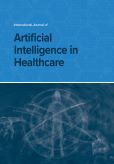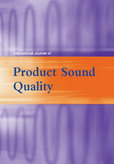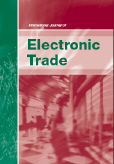Explore our journals
Browse journals by subject
Research picks
- I will survive
Entrepreneurial success can emerge through the gradual development of reflexive decision-making rather than linear planning or favourable starting conditions, according to research in the International Journal of Management and Enterprise Development. The research looked at how a business moved from stalled operations to sustained competitiveness by navigating structural constraints in Britain's health and social care market over more than a decade.
The study follows a single enterprise, a London-based social enterprise founded by an African refugee woman over the course of thirteen years. The research was a longitudinal case study that tracked change over an extended period of time rather than capturing a simple snapshot of activity at a specific time. Moreover, it founded in a critical realist framework, which examined how an individual organisation operates within, and is shaped by, wider social and institutional structures. Central to the analysis is the notion of reflexivity, which is defined as the internal process through which an individual evaluates their circumstances, reassess their goals and adjust their actions in response to changing conditions.
In their case study, the team notes an early period of fractured reflexivity. Social ambition was strong, but strategic focus was limited. This resulted in zero measurable performance outcomes. Progress followed only as the entrepreneur developed autonomous reflexivity, enabling more disciplined decision-making, engagement with local business networks, and ultimately the establishment of operational credibility.
As the enterprise matured, communicative reflexivity became more and more important. Where there was dialogue with public-sector bodies then stats improved and access to competitively funded contracts opened up. Moreover, there was gradual recognition within London's regulated health and social care system. This later phase coincided with the building of reputation, quality certifications, and even national awards. In turn, these all further supported access to the market.
More recently, the entrepreneur involved has demonstrated what we might call meta-reflexivity, continually evaluating the enterprise's social mission along with its financial performance. She has reinvested profits into free training programmes for refugee women, embedded social value creation directly into the business model but still maintained commercial viability.
Given that conventional narratives often frame refugee entrepreneurs in terms of barriers and vulnerabilities, this case study demonstrates that refugee entrepreneurship within broader debates on migration, urban economies, and demographic change, can be framed far more positively.
Mutiganda, J.C. (2026) 'Understanding the process of starting up and managing the performance of a refugee enterprise: a critical realist case study', Int. J. Management and Enterprise Development, Vol. 25, No. 5, pp.1–17.
DOI: 10.1504/IJMED.2026.151258 - Emotion detector
A novel facial expression recognition system designed to overcome the conflict between accuracy and real-world use is discussed in the International Journal of Applied Pattern Recognition. The approach performs well while remaining computationally lightweight and addresses one of the main challenges facing emotion-aware technologies for vehicles, consumer devices, and healthcare applications.
Facial expression recognition involves classifying human emotions based on a visual analysis of the face. It has benefited from deep learning technology that use multilayered neural networks to examine an image. But, such technology generally requires a lot of computational power. The new work combines classical image analysis with a streamlined deep-learning architecture that preserves performance while lowering computational requirements.
The team has used a convolutional neural network, a type of model well suited to image processing. And, rather than solely learning from training data, the system uses traditional texture descriptors and grey levels. By combining these well-used computer vision techniques with the neural network outputs that can analyse fine-grained facial detail at low computational cost.
The team has tested their approach using two benchmark data sets, large collections of facial images annotated for emotional content. The system achieved recognition accuracies of almost 80 per cent for one and almost 87 per cent for the other. Real-world type tests on still images, recorded video, and live camera feeds in real time also showed how well the system can perform.
Such work is part of a broad area known as affective computing, the discipline concerned with recognising and responding to human emotion. By showing that hybrid designs can offset the computational resource demands of deep learning, the work opens up the possibility of developing emotion recognition that can be integrated into public infrastructure, mobile devices, and clinical environments for a wide range of applications.
Zhang, X. and Yan, C. (2025) 'Face expression classification and recognition based on LBP+GLCM features and attention mechanism in CNN', Int. J. Applied Pattern Recognition, Vol. 8, No. 1, pp.1–15.
DOI: 10.1504/IJAPR.2025.150992 - Two-way ticket
A review in the International Journal of Business Excellence of half a century of scholarship has found that academic interest in why migrants return to their countries of origin has expanded sharply over the past decade. The review reframes return migration as a central feature of the global circulation of skills, rather than a marginal or corrective movement.
The researchers studied 375 peer-reviewed papers published during the period 1972 to 2022. The work thus offers the most comprehensive mapping to date of how this field of social science has evolved in recent decades. The study used bibliometric analysis, a quantitative method that examines patterns in academic publishing such as citation trends, collaboration networks, and thematic clustering. The analysis revealed a steady growth in output, with publication rates rising particularly quickly after 2010. Total citations increases continuously, but the average citations per article declined from 2015 onwards. The authors suspect that this change was down to rapid diversification and specialisation within the field at that time.
They point out that high-ranking journals in migration studies, business, and management dominated the output, as one might expect. This, they suggest, highlights the relevance of return migration to organisational strategy, economic performance, and institutional governance. Scholarly leadership is concentrated in Canada, Spain, the UK, and the USA, although many papers have international authorship.
The review also shows that the focus in this area of research has changed. In the early years covered by the review, research largely addressed aggregate population movements, demographic change, and macro-level migration flows. However, in the two most recent decades covered, research has moved towards the lived experience of return. Gender emerges as a central analytical category, while education, particularly higher education and international student mobility, form a core thematic pillar. The team believes that this reflects a growing engagement with human capital theory, an economic framework that views education and skills as investments shaping productivity and earnings.
Yadav, M., Kumar, M., Dagar, M., Tiwari, N.K., Pandey, A. and Amoozegar, A. (2025) 'Revisiting return migration: literature insights and a bibliometric perspective on emerging global mobility trends', Int. J. Business Excellence, Vol. 37, No. 7, pp.1–26.
DOI: 10.1504/IJBEX.2025.150979 - Just because you're a paranoid android...
A new forensic framework designed specifically for the Internet of Things (IoT) is discussed in the International Journal of Electronic Security and Digital Forensics. This deep learning-driven system offers benefits over earlier approaches in detecting and reconstructing cyberattacks on components of the vast network of connected sensors, appliances and machines. It achieves an accuracy of almost 98 percent, according to the researchers, and cuts analysis time by more than three quarters.
There has been a sharp rise in malware aimed at IoT environments. Standard digital forensics tools struggle in this space with the volume, diversity, and the enormous and constant flow of data. The researchers suggest that existing methods, built for relatively static computers and servers, are increasingly mismatched to the IoT world. Given that IoT systems now underpin a lot of transport networks, domestic technologies, and urban infrastructure they will be increasingly vulnerable unless security systems can keep up.
At the heart of this new approach is a hybrid deep learning model that combines a convolutional neural network. This can identify patterns in data using its long short-term memory architecture. When applied to IoT network traffic, the system can detect the subtle signatures of a cyberattack as they evolve over time, rather than simply spotting isolated events.
The team has improved performance by refining the detection approach with a so-called particle swarm optimisation. This technique was inspired by collective behaviour in nature, such as starling murmurations, and honeybee swarming. It can dynamically adjust the detection parameters to home in on the optimal approach without heavy increasing computational cost. This is particularly important for protecting IoT devices, many of which operate with limited processing power and low energy budgets.
Tests conducted across simulated vehicle networks, smart homes, and smart city infrastructures showed that the model works better than existing forensic tools. It is faster and more accurate, but also has the ability to trace and classify multiple forms of cyberattack.
Almadud, W. and Al-Shargabi, A.A. (2026) 'Efficient digital forensics in the IoT environment: a hybrid framework using deep-federated learning', Int. J. Electronic Security and Digital Forensics, Vol. 18, No. 7, pp.1-33.
DOI: 10.1504/IJESDF.2026.150991 - The promise of a roof garden
Urban roof gardens can help with removal of atmospheric pollutants at measurable, controllable rates, according to a study in the International Journal of Environment and Pollution. The research suggests that rather than simply being decorative, recreational features, such gardens can become part of an active and living environmental infrastructure.
The team report that a dynamically managed rooftop system can be established to absorb hazardous fine particulate matter from the cityscape including (PM2.5, airborne particles that are smaller than 2.5 micrometres) at a rate of about 42.5 micrograms per square metre per hour. It can also absorb nitrogen oxides (NOx, toxic combustion gases) at a rate of 15.6 micrograms per square metre per hour.
The work begins to address growing concern that conventional urban greening, typically static plantings designed for visual appeal, has limited capacity to respond to pollution or climate change. More adaptive and responsive planting, on the other hand, to construct layered plant communities in roof gardens could be functional as well as aesthetic. The team suggests that by grouping species together according to their known capacity to absorb different pollutants, it should be possible to address the problem of different contaminants in the same growing patch. They have carried out tests in an environmental chamber and found that such coordinated but mixed planting can be more effective than single-species approaches given the common mix of urban pollution.
The work also demonstrated that by using a lightweight, bioactive growing substrate containing activated carbon (pollutant absorbing) and vermiculite (for aeration and moisture retention), such planting could improve the rate of pollutant mineralisation.
Guo, R. and Xiao, Z. (2025) 'Roof garden plant selection and ecological application: comprehensive strategies to deal with environmental pollution', Int. J. Environment and Pollution, Vol. 75, No. 4, pp.338–360.
DOI: 10.1504/IJEP.2025.150943 - Integrated lasso loops in aneurysm risk data
A set of indicators, natural chemicals found in the blood, known as biomarkers, can help predict when an aneurysm in the brain might rupture. The work, published in the International Journal of Data Mining and Bioinformatics, looks at the risk of rupture associated with the ballooning out of a weakened blood vessel in the brain, that can lead to catastrophic bleeding. By analysing genetic data from three groups of patients, the team has identified characteristics associated with increased instability of an aneurysm.
The researchers used genetic profiling to look at activity associated with stable and ruptured aneurysms, as well as interactions between proteins that were linked to the latter and not the former. Across all the data, they found two interactions that were active in aneurysms prone to rupture. Then, by using machine learning techniques, specifically Least Absolute Shrinkage and Selection Operator (LASSO) regression, they were able to develop a prediction curve that gives a patient rupture risk based on the presence of the biomarkers.
The findings highlight an underlying mechanism that links chronically raised elevated blood pressure, hypertension, and inflammation in the vasculature of the brain. Hypertension puts mechanical strain on the walls of the blood vessels, while, at the same, activating a hormone-driven regulator of blood pressure, known as the local renin-angiotensin system. This system triggers inflammation and can weaken blood vessels. The research suggests that those genes associated with these biological systems come together to increase a person's risk of a ruptured aneurysm. As such, they also now become targets for the development of novel therapies that are aimed at reducing mechanical stress in the brain's blood vessels as well as lowering local inflammation.
This new understanding might improve the medical outcome for at-risk patients as well as precluding unnecessary medical intervention for those at lower risk who happen to have other risk factors. Given the prevalence of intracranial aneurysms and the high morbidity associated with rupture, such strategies could shift management from reactive emergency treatment to proactive, targeted prevention.
Liu, J-Y., Yuan, J., Luo, L. and Yin, X. (2026) 'Hypertension-driven mechano-immune crosstalk related novel genes may be potential targets for IA rupture progression', Int. J. Data Mining and Bioinformatics, Vol. 30, No. 5, pp.1–14.
DOI: 10.1504/IJDMB.2026.150996 - The heat is on
Researchers have developed a new algorithmic model that can improve predictions of cooling demand for greener buildings. This kind of control will be a key factor in energy efficiency, allowing interior climate control systems to optimise cooling periods and so reduce energy demands.
The framework for the new model is based on a probabilistic neural network (PNN), which has been tested across varied climatic conditions. According to the research published in the International Journal of Environment and Pollution, it delivers accurate forecasts and quantifies the uncertainty in a way that conventional models do not.
Cooling systems account for a substantial proportion of a building's energy consumption in the hottest parts of the world. Their operation is dependent on outside temperature, humidity, building characteristics, and occupant behaviour. The standard control models usually assume linear relationships and so cannot capture the nonlinear dynamics of climatic variability and requirements. The PNN approach overcomes this problem by modelling the nonlinear relationships. This allows the system to understand the intricacies of the building-specific data and to provide better predictions to optimise climate control. The team was able to demonstrate almost 97 percent reliable control across various scenarios.
Such a system could be used by policymakers, developers, and energy managers hoping to optimise cooling in hot climates and to reduce the carbon footprint of air-conditioning systems. By providing a more subtle understanding of cooling load variability, the PNN allows for accurate data-driven decisions regarding system design, operational scheduling, and regulatory compliance. The team explains that plans can be put in place for both typical and extreme conditions with greater assurance, reducing energy waste while maintaining occupant comfort.
The same framework might have broader energy management use, allowing for short-term control as well as long-term planning of infrastructure in low-carbon developments. The construction industry must incorporate green systems, and such tools as PNN-managed climate control could play an important role in the development of sustainable buildings.
Zheng, H. and Wang, P. (2025) 'Predicting the cooling capacity of green buildings using probabilistic neural network models', Int. J. Environment and Pollution, Vol. 75, No. 4, pp.261–279.
DOI: 10.1504/IJEP.2025.150925 - Looking for a nappy ending
Diapers (nappies) and feminine hygiene products (menstrual pads and tampons) are emerging as a critical challenge in the waste management. They account for a disproportionate share of municipal waste, according to work in the International Journal of Sustainable Society.
An analysis conducted across 31 Slovak cities showed that these products alone make up 10% of total mixed waste in both urban and rural settings. There have been recent efforts to improve waste reduction and recycling. However, addressing the environmental impact of this waste stream remains a significant challenge in the Slovak Republic and elsewhere and is hindering sustainability efforts in many places.
The research points out that diapers and sanitary products, though comprising a substantial propportion of waste, are not covered by current waste legislation. These items, primarily comprising plastics and superabsorbent polymers as well as biological materials after use, represent a major problem in recycling and are generally fed into landfill or incinerated rather than being recycled in most places.
While their contents after use will degrade biologically, the materials from which they are manufactured might take centuries to decompose in landfills. While the global market produces billions of units annually, the lack of regulation and effective recycling for these products exacerbates the waste management issues, especially in the Slovak Republic, where recycling rates overall are below EU averages.
The study points to potential solutions, including composting, which has been shown to reduce the volume of diaper waste. However, these methods are limited by the non-biodegradable materials involved. Emerging technologies, such as vermicomposting and thermal pyrolysis, offer promising alternatives by recycling used diapers into usable materials. However, these technologies require proper infrastructure and legislative support to be fully effective.
Peterkova, V., Ilko, I., Martincova, R. and Preinerova, K. (2025) 'Analysis of municipal waste and management of baby nappies and sanitary napkins in the Slovak Republic', Int. J. Sustainable Society, Vol. 17, No. 4, pp.355–369.
DOI: 10.1504/IJSSOC.2025.150907 - Securing systems against the subtle but sinister
The modern network is a place where danger whispers rather than shouts. Corporate systems, public services, and critical infrastructure are increasingly complex and increasingly vulnerable to more subtle cyberattack. Where an old-school hacker might try brute-force techniques or an army of bots that pound the system until it breaks, modern threats can work more insidiously. They might masquerade as ordinary server traffic, draining resources or slowly siphoning off data, while the anti-malware systems and firewalls are focused on the brutes.
New intrusion-detection models are needed, according to the author of work published in the International Journal of Reasoning-based Intelligent Systems. While it is generally easy to hear the alarm bells ringing when the brutes are pounding the servers, the sinister-but-subtle attackers need a different approach, one that listens out for the whispers.
In the work, a new model, called ST-CCNet, promises this kind of protection. In tests against standard benchmarks, it accurately – 98.2 percent – identified covert attacks better than existing approaches. More specifically, it was able to spot low-rate distributed denial-of-service (dDOS) attacks, botnet activity, and subtle web intrusions that had been designed to look like legitimate behaviour. The model can now detect slow-burn attacks that exhaust server capacity over long periods, or threats that unfold over weeks or months. Such attacks have long been the nemesis of network security systems.
One part of the ST-CCNet system uses causal convolution to analyse traffic in temporal order, capturing tiny, momentary deviations that may appear only for microseconds but can mark the opening move of an attack. In parallel with this, a spatio-temporal transformer scans across much longer timescales, identifying patterns that only become meaningful when viewed in context, such as the rhythmic exchanges between compromised machines and their controllers.
This balanced approach addresses the shortcomings of conventional security. By combining short-term acuity with long-term memory, ST-CCNet aligns with the way real sinister-but-subtle attacks operate.
Chi, W. (2025) 'Multidimensional covert traffic attack detection via coupled spatio-temporal transformer and causal convolutional networks', Int. J. Reasoning-based Intelligent Systems, Vol. 17, No. 12, pp.35–44.
DOI: 10.1504/IJRIS.2025.150501 - Bless the MSMEs down in Africa
Sustainable entrepreneurship in Nigeria is being stymied by a lack of engagement among business owners because of structural economic and institutional barriers, according to research in the World Review of Entrepreneurship, Management and Sustainable Development that has studied one of Africa's largest entrepreneurial ecosystems.
The research used quantitative data from 310 entrepreneurs across manufacturing, sales, and food services. An analysis of this data showed that unstable macroeconomic conditions, limited access to finance, weak technological infrastructure, and inconsistent government support are the main barriers faced by entrepreneurs hoping to adopt environmentally responsible business practices. Moreover, they found that many entrepreneurs operate under conditions in which immediate cash-flow pressures outweigh long-term environmental considerations. The result is that sustainability initiatives are difficult to get underway and even harder to maintain.
Entrepreneurs in Nigeria, the study found, are somewhat aware of sustainability principles, but currency volatility, high inflation, and unreliable public services restrain action. The researchers add that access to affordable credit remains limited, particularly for micro, small and medium-sized enterprises (MSMEs). Such companies with fewer than 250 employees form the backbone of the Nigerian economy. Without financial buffers or capital, investments in cleaner technologies or resource-efficient processes are often postponed indefinitely. There is thus an urgent need to improve conditions for entrepreneurs to encourage those that are less than willing to engage that there are long-term benefits, and to nudge the more engaged further towards sustainability. Regulatory incentives and green technologies that have remained largely inaccessible to smaller companies need to be opened up to Nigeria's MSMEs.
There are obvious implications for other emerging economies facing similar constraints, which also risk missing out on the economic, environmental, and social benefits associated with sustainable enterprise. There is a need to align financial systems, policy instruments, and educational initiatives with sustainability objectives across the whole of the developing world, the research would suggest.
Ogbolu, G., Adelaja, A.A. Ohanagorom, M.I. and Shwedeh, F. (2025) 'Examining the inhibiting factors of sustainable entrepreneurship: evidence from emerging economies', World Review of Entrepreneurship, Management and Sustainable Development, Vol. 21, No. 6, pp.1–26.
DOI: 10.1504/WREMSD.2025.150508
News
Prof. Chi-Wei Su appointed as new Editor in Chief of International Journal of Financial Markets and Derivatives and International Journal of Environment and Health
Prof. Chi-Wei Su from Qingdao University in China has been appointed to take over editorship of the International Journal of Financial Markets and Derivatives and International Journal of Environment and Health.
Associate Prof. Gorazd Justinek appointed as Dean of DOBA University of Applied Sciences
We are pleased to report that the Governing Board of DOBA University of Applied Sciences (Maribor) has appointed the Editor in Chief of the International Journal of Diplomacy and Economy, Associate Prof. Gorazd Justinek, an expert in international political, economic and business relations, as the new Dean of the Faculty. He assumed the position on 1st January, 2026.
The new Dean brings extensive leadership and professional experience from academia, public administration and international cooperation to the role. Prof. Justinek is a university lecturer and an active researcher, focused on strengthening academic excellence, scientific research work, as well as the further development and innovation for the DOBA University of Applied Sciences and the International Journal of Diplomacy and Economy.
Prof. Ana Cristina Fachinelli appointed as new Editor in Chief of International Journal of Knowledge-Based Development
Prof. Ana Cristina Fachinelli from the Universidade de Caxias do Sul in Brazil has been appointed to take over editorship of the International Journal of Knowledge-Based Development. The departing Editor in Chief, Dr. Daniela Carlucci, will remain involved in the journal in the capacity of Associate Editor.




